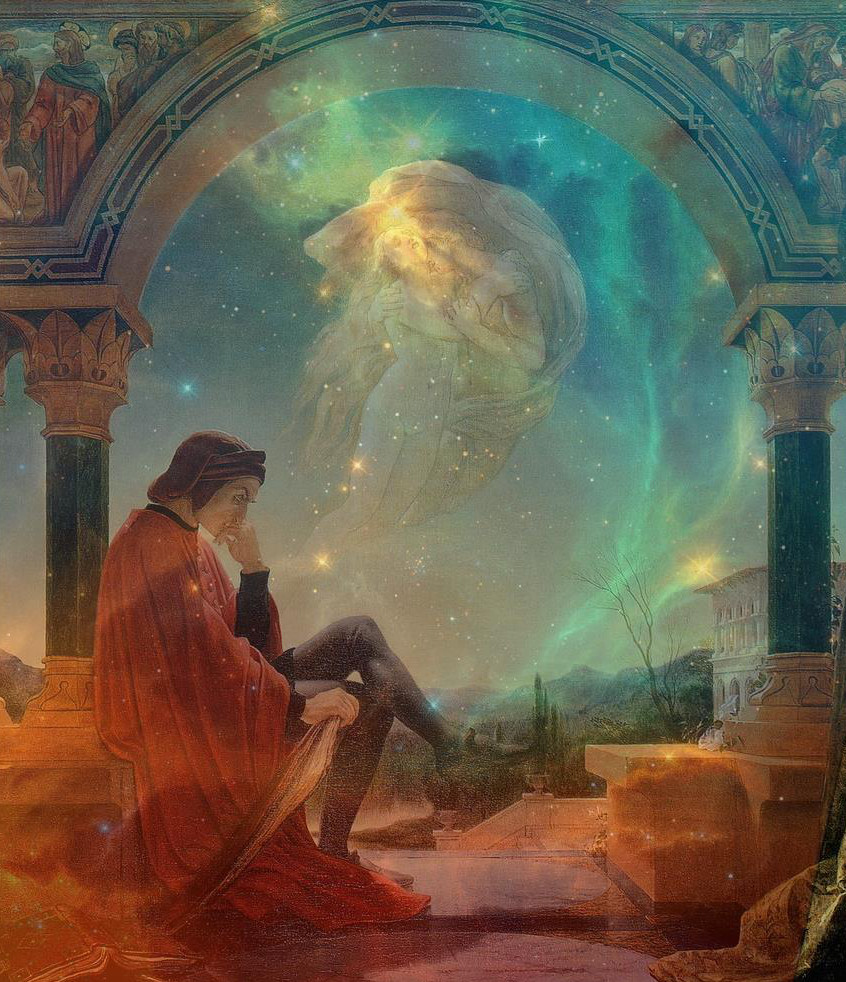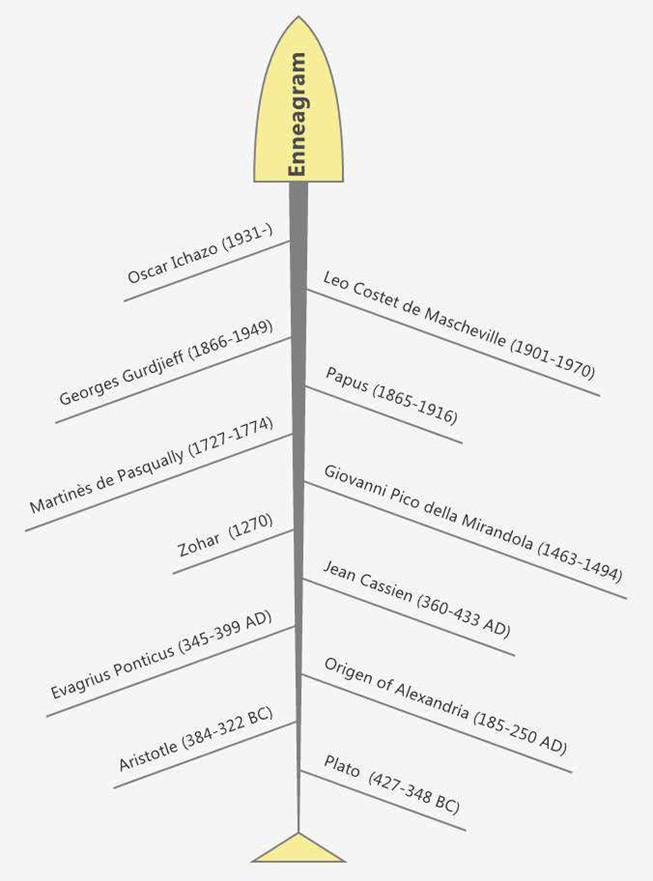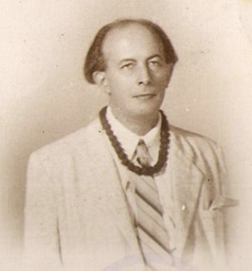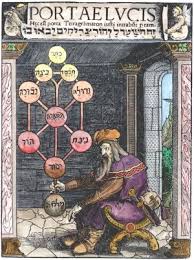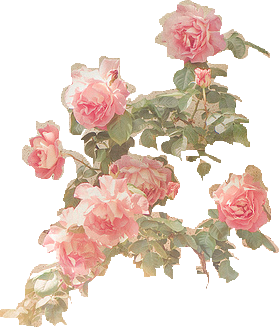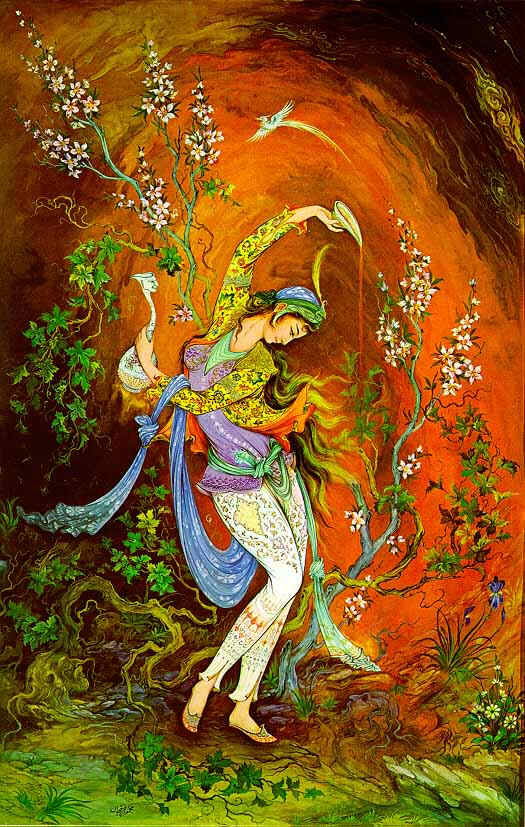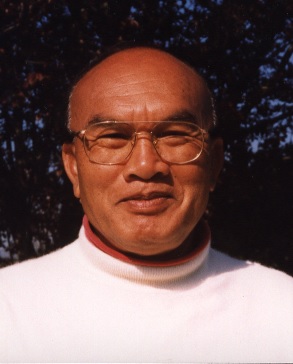Welcome, dear readers and friends, on the new English page of the MARIE Institut, dedicated to the research of Bernadette and Frederic on the Enneagram.
We will publish posts regularly to explain all the different aspects on our new Model, on a both theoretical and practical point of view, such as the fundamental energetical basis of the 3 Centers, the correlation between the 9 types with the Hippocratic and the 5 Taoist Elements, the correlation between the Subtypes and the 5 Jungian Functions, the 5 structures of Character of W Reich, the 5 Wisdom Families of the Buddhist Tradition, and more.
Some other will be on the Homeopathy and Enneagram, but only on a general level.
Some portraits will be proposed also on this page , in a more practical way
This blog will go complementary to Enneagram Monthly Group and magazine and will explore in a deeper way some different topic.
Please, feel free to ask us if you want specific subject to be more explained.
missing pictures and illustration sorry, some bugs
Mahmoud Farshian, Iranian painter, arrangment
Turning to the Source: Enneagram Revisited
Bernadette Bollero-Schmitt et Frédéric Schmit MD homeopath
We would like to introduce you to a novel reading of the Enneagram. The Enneagram is like a puzzle, and each player must bring their own piece to the puzzle whatever it may be.
If we have only one or a few pieces it will not allow us to see the entire puzzle, and it will remain necessarily incomplete.
One of the more blocking factors to the evolution of science is the adhesion to incomplete theories as if they represented the entire reality. It’s called dogma. In dogma there is also an unconscious tyranny imposed over the followers: “You cannot deviate from the script, because I am the Truth”. So we have an unconscious fear of deviating and of punishment; that is blocking one’s creativity.
In the Taoist cycle of evolution, each time when yang becomes old, the young yin begins to appear, and vice versa. Or yang in its extreme turns into Yin and Yin in its extreme turns into Yang.
We strongly feel that the Enneagram has reached a point of maturity where it necessarily will move towards a new beginning of a yin rebirth. These two phases of the cycle cannot exist one without the other, and mutually complete each other.
So we are pleased to propose to the enneagram community a new paradigm, not only a few new pieces of the puzzle, but also new and open angles of vision.
Enneagram and Self Mandala
Bernadette Bollero-Schmitt
Frédéric Schmitt, MD, homéopath.
Auvergne 2006
This article was written in 2006 and covers the research since 2000 to 2006 only .
For more whole and complete research , please, you can read our articles in Enneagram Montly, specially on the subtypes ( edited on this blog also ).
Some books are already written, but are only courses’s material for advanced students
A book for public is being written …
See also, about the History of the Enneagram , some more material
Introduction
Enneagram is a tool whose origin is mysterious. Soufis call it the sign of presence of God. We are indebted with G.I. Gurdjieff to have revealed, in the years 1920, for the first time in the west this remarkable system. However its systematic use in comprehension and analysis of human psyche goes up in Oscar Ichazo in the years 1960. Laleh Bakthiar published a remarkable work in 1994 raising for the first time the veil on the soufi approach of enneagram.
Bernadette knew enneagram in contact with her Master, Venerable Dhiravamsa, respected Buddhist teacher, having himself studied it with Claudio Naranjo in the years 1970.
Frederic is a doctor, classical homeopath since 1986, also Dhiravamsa student.
In the years 2000, Bernadette and Frederic, discovered the keys allowing to apply enneagram to homeopathy. It proves that these two systems have a very great similarity. They present two entrance doors: for enneagram the three centers and the three subtypes, for homeopathy, the three miasmas and the three kingdoms. Their discovery consisted in putting in parallel the three centers and three miasmas as well as the three subtypes and the three kingdom.
| Enneagram | Center | Subtype |
| Homeopathy | Miasma | Kingdom |
In order to understand the importance of this discovery, it is necessary to recall that homeopathic therapeutic treats the individual as a whole in his three dimensions physical, energetic and psychic.
Samuel Hahnemann, founder of the Homeopathy
In this medical approach, the practice showed that a single substance will balance a single individual. This substance is called the Simillimum. All the quest of the homeopath pratictionner is to determine this famous graal : the Simillimum.
In homeopathy, in order to facilitate this research, the experts are accustomed to diagnosing as a preliminary the miasma and the kingdom of their patients. There are three miasmas (psora, sycosis and luesis) as well as three kingdom (mineral, animal, plant). The correct diagnosis of miasma and kingdom will point towards a certain group of specific remedies. However this research is difficult, because there exists nearly 3000 remedies in the homeopathic pharmacopeia. So that the homeopaths use only approximately a hundred of these remedies in 80% of the cases.
The discovery of Bernadette and Frederic made it possible to largely facilitate the diagnosis of miasma and kingdom. Indeed, their clinical practice showed that the prevalent center in the enneagram determines dominating miasma and in the same way the prevalent subtype that of the dominating kingdom. This is objectified in the following table :
| Centers | Instinctive | Emotional | Mental |
| Miasmas | Luesis | Psora | Sycosis |
| Subtypes | Selfpreservation | Sexual | Social |
| Kingdoms | Mineral | Animal | Vegetal |
History of the enneagram
Bernadette and Frederic Schmitt
From Enneagram Monthly, issue 215, March 2015
In the 1950’s, Oscar Ichazo (born in Bolivia in 1931) was invited to participate in a study group of high-ranking European and Oriental mystics in Buenos Aires, Argentina, composed of Martinists, Theosophists, Rosicrucians and Anthroposophists. Ichazo served them coffee, and they taught him Kabbalah, Sufism, Yoga, Zen and techniques from the Gurdjieff work. (see also EM issues 21, 22, and 23)
Quoting Ichazo:
“This was around 1950, and (one) man invited me to Buenos Aires, where I was involved with a group of mystics, many of whom were seventy or eighty years old when I met them. . . . None of them was South American. They were Europeans or from the Middle East” (Extract from “Interviews with Oscar Ichazo, a 1982 Arica Institute publication”).
According to Claudio Naranjo, Ichazo said specifically that he was handed the whole Tradition that is spread in many branches around the world in various cultures. He was given “the whole works” and the mission of translating it into Western terms.
One of the only names Ichazo has ever mentioned publicly as a teacher and source for him, is Leo Costet de Mascheville, a French spiritual teacher. Who was this man, and how could he be implicated in the genesis of the enneagram?
Leo Costet de Mascheville
We begin the story with his Father, Albert Raymond Costet-Conde de Mascheville (1872 -1943) born in Valence, France.
In 1895 at the age of 23 he became a Delegate of the Supreme Council of the Martinist Order founded by Papus (his real name: Dr. Gerard Encausse, a French medical doctor who founded the Martinist Order-L’ordre Martiniste- in 1887).
1901: birth of his son, Leo Costet de Mascheville (1901-1970) in France.
In 1910 he and his family left France and moved to Argentina arriving on February 26, 1910 in Buenos Aires.
In 1920 Albert Costet initiated his son Leo into the Martinist Order.
Léo Costet de Masheville
Albert Costet sends his son Leo to France on a special mission to re-connect with the Traditional Esoteric Orders of Martinism and the Kabalístic Rosy-Cross.
On March 22, 1927 Albert Costet is made Delegate of the Supreme Council of the Martinist Order of Papus, and starts the Order Kabalistica of the Rosy-Cross in the city of Curitiba, (Brazil).
1932: Leo Costet is transferred (probably on advice of his father) to Montevideo (Uruguay) and founds the esoteric study group GIDEE (Groupe d’études ésotériques) based on the Martinist Order of Papus..
In 1936 Albert Costet moves to Sao Paulo, and appoints his son as President of the Martinist-Order.
On December 23, 1939, the Constitution of the Martinist Order of South America is proclaimed in Porte Alegre, Brazil uniting all Martinists of Brazil, Argentina, and Uruguay.
1941: Leo Costet de Mascheville becomes “Sri Sevananda swami” and his Indian guru Subrahmanyananda makes him his the successor in the lineage of Suddha Dharma.
1949: Leo Costet founded “l’association mystique occidentale-Western Mystical Association” in Montevideo (Urugay) which soon became a center for convergence of different spiritual streams such as Suddha Dharma, Osiris Egyptian Ritual, Ramakrishna Ashram from Kriya Yoga, Sufi, Martinist Order, Maîtreya Mahasangah, Rose-Croix Order, Bodhi Dharma Zen,…
1953: he went to Resende, Rio de Janeiro (Brazil), where he acquired a very large area to establish an Ashram that became famous in Brazil and all over the world.
Everything is in concordance indicating that it was this group of mystics in Buenos Aires in which Ichazo was included, this group created by Albert and then led by Leo Costet de Mascheville \.
Given that the Maschevilles were the representatives of the Martinist Order in South America, it’s interesting to trace back the sources of this teachings to its beginning with Papus.
Papus and the Martinist Order
Papus (1865-1916) founded the Martinist Order in 1887. He was deeply immersed with the European occultist spring and publicly claimed to be the depository of the teaching of the “initiate” Louis-Claude de Saint Martin (1743-1803) who in turn gave credit for his teachings to Martinès de Pasqually (1727-1774). The name “Martinist” came from the name of “Saint Martin” but de Pasqually was the real inspirer of the Martinist Order.
To emphasize the importance of the Kabbalah in the Martinist Order, here’s an excerpt from their French website (http://www.martiniste.org): “Kabbalah is the book of the occult tradition of Israel. It should be in the hands of every man who wishes to deepen the mystery of life, who wonders what the origin and destiny of the existence is, and would like to explore the realm of the invisible to understand relations with the visible world.”
It’s important to know that Kabbalah as taught by the Martinist Order as well as different European esoteric and occultist movements is not the Jewish Kabbalah but a more syncretic form usually called Christian Kabbalah.
Jewish Kabbalah
In 1174, the publication of a strange and enigmatic text in Southern France known as the Bahir was by most commentators, ancient and modern, regarded as the true beginning of Kabbalah. Attempts to establish its authorship or provenance have been largely unsuccessful. The main focus for Kabbalah then moved to Northern Spain, where its salient conceptions attained a stable form, culminating in the publication of the most important and influential of Kabbalistic texts, the Zohar. Moses de León (c. 1250 – 1305) the Spanish rabbi and Kabbalist is thought to have been its author or redactor. The Zohar is a group of books including commentary on the mystical aspects of the Torah (the five books of Moses) and scriptural interpretations as well as material on mysticism, mythical cosmogony and mystical psychology.
Christian Kabbalah
Mixage of Laetitia Casta and Fontaine Medicis, Paris
I wanted to speak briefly today about the Lotus / Padma Wisdom Family one of the five Wisdom Families found in Tibetan Buddhism, corresponding to the five main emotions namely :
Diamant / Vajra family : Anger,
Lotus / Padma : Desire,
Activity / Karma : Jealousy,
Jewels / Ratna : Pride
Awakening / Buddha : Ignorance
We have stated in previous articles the different correlations existing between these 5 families and the typological systems of Jung, Le Senne and Reich, among and of course with the subytpes of the Enneagram. So I would like the reader to refer in particular to the article: “Subtypes, a new and integrative vision “, (not translated into French yet)
Desire and Passion
In tantric Buddhism, this energy is called Padma. “Padma, literally means “lotus flower.” The symbol of the enlightened Padma family is the lotus, which grows and blooms in the mud, yet still comes out pure and clean, virginal and clear. Padma neurosis is connected with passion, a grasping quality and a desire to possess. We are completely wrapped up in desire and want only to seduce the world, without concern for real communication. A person with Padma neurosis speaks gently, fantastically gently, and he or she is seemingly very sexy, kind, magnificent, and completely accommodating. When padma neurosis is transmuted, it become fantastically precise and aware; it turns into tremendous interest and inquisitiveness. Everything is seen in its own distinct way with its own particular qualities and characteristics. Thus the wisdom of padma is called discriminating-awareness wisdom” (Chögyam Trungpa, Journey without a goal).
Padma/Lotus based characters presents themselves as charming persons, be they men or women. They are seductive, soft, very sensitive, prone to emotion, highly sympathetic, sentimental, romantic, sometimes a little bit sugary or pedantic. Often they physical traits are very fine and delicate. There are much softness, grace and beauty in this type.
On the Jungian function it’s feeling. Feeling is how we like or dislike a sensation, based on its agreeable or unpleasant quality. If it’s agreeable, our feeling will like, and on the contrary, will dislike.
Positive aspects:
Compassion, love, affection, kindness, intuition, openness of heart, contact, harmony, empathy, kindness, affability, sweetness, charm, delicacy, refined taste, finesse, love of art and beauty, artistry, loving state, romance, seduction, magnetism, charisma, attractiveness, sensitivity, sensuality, pleasure, intimacy, purity, pristinity.
Negative aspects:
Desire and obsessive attachment. burning, all-consuming and destructive Passion. Desire to please. Great need for love. Need for intimacy, fusion, attention. Excessive dependence. He lives in the eyes of the other. Intense heartache. Feels lack cruelly. Feelings of abandonment, separation, isolation, loss, desolation. Depression. Melancholy. Emotional instability and credulity. Frivolity. Lust. Erotomania. Perversion. Manipulation. Hysteria.
Enneagram :
This family corresponds according to us to the fourth subtype of the Enneagram, that we called Sexual Venus, in opposition to the Sexual Mars, more masculine
Warning ! : This Padma / Lotus Family is, according to our observations, always confused with type 4, or possibly 2 or 6 of the Enneagram … Caution !
We can find in every type this beautiful energy, even in a type 8 or 1 or 9 etc….( Ex : Angelina Jolie, type 5, Emmanuelle Béart, type 1, Sharon Stone type 8, etc )
Excerpts , Book in progress …
Thank you for your angel’s patience …
Wild Rose
Type 4 Air/Social
I would like to talk to you today about the Bach Flower Wild Rose, flower that I know well since it corresponds to the Type 4 Air that is, this is no longer a secret for anyone, my type and my subtype in the Enneagram system (4 social)
I composed this mixage a few days ago without knowing that I was going to use it for this little article … An additional evodence may be that the essences of the Flowers participate in an absolutely vibrating way to the soul of our world by doing the delicate and subtle echoes of the field of our psyche, especially as we will see it, this Flower also corresponds to the Angels n ° 43 and 44 (from Oct 25 to Nov 2) which we cross the sphere of influence today where I am writing this post …
Type 4 Air/Social
Here is a short defintion, as we described it :
Air: defeat/Resignation
In this configuration the disabled complex is centered on the feeling of being the scapegoat of someone who wants to trouble and disarmed us. We are beating in retreat.
Yang: The type 4 in its extroverted aspect will compensate the feeling of defeat by taking the role of the one seeking quarrel and who will knowingly abuse each other and humiliate them so that he will beat in retreat. This attitude is fundamentally based on a paranoid vision of things and leads the individual to find himself isolated from the others.
Yin: The type 4 in his introverted aspect will be resigned to his fate of scapegoat. He found himself disarmed and the target of a perverse and sadistic individual who will ill-treat until he beat in retreat.
Wild Rose :
Apathy, lack of will and resignation :
According to Dr. Edward Bach this Flower is used as a basic treatment of apathy, resignation, lack of fit and enthusiasm.
“Harmoniously developed, the Wild Rose type is able to adapt to constantly changing situations without losing sight of the positive side. He has no problem with his destiny because he gives himself up fearlessly and without resistance to the greater powers that determine everything in this life. As a realist in the best sense, he never tries to make reality (that which has happened) into something different but instead has an innocent, positive attitude and takes everything as it comes. His lack of prejudice and refusal to take things for granted makes it difficult for him to encounter any situation that will make him unhappy. Like a sapling that sways with the wind, he allows himself to be taken here and there by the whims of fate, dreamily, playfully, and willingly. He never looks at reality with preconceptions or stubborn ideas; he can see things with an inner freedom and innocence that allow him to make the best of anything he encounters.”
“Unfavorably developed, his passive, accepting nature can get the better of him. He allows himself to go through life without will or drive, and he has no interest in his life; he develops a kind of resignation that has a hint of a departure from life. He is no longer able to clearly assess his situation, to take reasonable countermeasures when required, or to ask for help. The Wild Rose syndrome does not usually consist of extreme resignation but of a lessened enthusiasm and a tendency just to let things run as they are. One has the impression that the Wild Rose type uses only a fraction of his potential and does not develop himself fully. He is not able to accomplish as much as he should and needs to stop and rest often, which leads to a limited life. If he should start a project, he comes immediately to a halt, like a vehicle stuck in the sand. His potential remains unfulfilled, he just hangs around aimlessly, and, even when things are not going well for him, he can’t pick himself up to do anything about it. He’ll do nothing to change an unhealthy living situation, he’ll stay with a lousy marriage, and he’ll take any wretched situation as it comes. If his behavior were a conscious and aware answer to an unavoidable circumstance, it would make sense as a kind of survival tactic. In this case, however, it is a sign of a pathological lack of interest and vitality and an extensive loss of creativity.” Read more Dr Gotz Blome “Advanced Bach Flower Therapy ”
Wild Rose corresponds, according to our work, to type 4 Air Social
Other links :
Minor Tarot card : 5 Swords
Angels : Veuliah No. 43 (Air Yang), Yelaiah No. 44 (Air Yin)
Illustration Mahmoud Farshian
Rumi
This very deep Rumi poem speaks metaphorically of the interrelated causes of the phenomena ( the dependant origination called Nidanas in sanskrit ) that intrude upon each other in such a compact manner that we find it difficult to discern the parts that make up what we call our Ego.
To be able to dissect each of these constituent parts, to observe how we grasp each of them, always without being aware of it , and how we deceive ourselves of the reality of these phenomena by identifying the part at all, is what we try to do when we meditate.
Let Dhiravamsa speak about the practice of Insight Meditation :
VIPASSANA : THE UNIQUE WAY TO AWAKENING
The Meaning and Scope of Vipassana :
” The literal meaning of Vipassana is total, clear seeing, a profound and panoramic vision. This refers to seeing with the eye of wholeness, which means recognizing that nothing occurs in isolation or independently, that problems need to be seen within the context of whole systems. Seeing in this way, we are able to perceive the intrinsic web of interconnectedness underlying our experience and merge with it. For example, we acknowledge the ways in which we are extraordinary arid miraculous, and at the same time do not hose sight of the ways in which we are simultaneously nothing special, just part of a larger unfolding, as waves on the sea. We can call the rising up and falling back in such brief moment’s “ life spans.” Together with this way of seeing is total freedom from what Albert Einstein called “optical delusion of consciousness,” or “moha” according to the Buddha. Furthermore, seeing in the Vipassana way frees us from the incessant distortions characteristic of our everyday emotional and thought processes, distortions that, as we have seen, can continually undermine the experiencing of our intrinsic wholeness. ”
Insight Medition and Enneagram :
” With regard to the Buddha’s teaching on “How suffering arises and where it ends” or “Paticcasamyppada – Dependent Origination,” I find it very important for all of us to know and to put it into practice. The reason being that the most essential work on the enneagram lies in a complete and precise comprehension of all the ennea-types or characters, their interrelationships, their ruling passions, and how to put an end to their compulsive patterns of conditioning, or how to liberate ourselves from these passions and to break down the character structures of the ennea-types. To put it in the Buddha’s terminology, the enneagram itself is suffering or sankkhâra-dukkha in Pali, the ennea-types’ ruling passions are the root causes of suffering which need to be utterly eliminated or transformed, and total freedom from the ennea-types is equal to Nirvana in life (the utter ending of suffering and the blowing out once and for alt of all the fires that burn our lives,) and the means whereby such a goal can be achieved, is Insight Meditation. This basic meditation comprises the five indispensable factors of the Buddha’s middle path: They are right understanding, right thinking, right mindfulness, right perseverance, and right samadhi (inner stability and peace of mind.) By understanding and practicing the paticcasamuppada in daily life you will be able to speed up as well as to complete your work on the enneagram, which will bear great fruit in your life. ”
I would like to end this conclusion by referring to the Buddha’s wise words in the Dhammapada, which are jewels for everyone :
“Those who are aware and awake always rise.
To no abode are they attached; (not dwelling on any States of mind)
Like the swans that quit their ponds,
Water after water they abandon (and go on.)”
Vigilant and fully aware among the inattentive,
Totally awake among those failing asleep,
The wise person proceeds rapidly
As a fast horse leaving behind a weak nag.”
“Knowing that self-love is first and foremost
One should hold a high esteem for one’s self. During any of the three phases of life
The wise should keep lively vigil.”
Excerpt of the book of Dhiravamsa : Enneagram and Vipassana Meditation
Dhiravamsa, Vipassana master, living in Grand Canaria
Friedrich Nietzsche (1844-1900 )
Type 5, wing 6
“An old solitary tree without leaves, lying in a lush orchard”
Degree of Decay or Neglect
Serious nature, promised to a rich and happy life, which will ultimately compromise his work by errors of judgment, risking criticism, disavowal or rejection. Regrets, disappointments and final solitude. Gabriel in “The Golden Sphere”, the 18th degree of the Lion, which corresponds to the type 5 Yin Fire to which F Nietzsche belongs.
Hahahel, the Angel of Spiritual Wealth:
On the occasion of the birthday of Friedrich Nietzsche, born on October 15, 1844, I wanted to make this short note, without wanting to develop any more, for want of time and certainly also of knowledge necessary for drawing up a portrait of such a character
However, the enormous richness of his personality demands that several articles be devoted to it, covering each of its many facets in the image of its lush and prodigious thought, a source of inspiration for many, contempt or fear for others, others, but which can not leave anyone indifferent.
Here today his two Angels, first his Birth Angel, Hahahel and second his Ennea-Angel , Aladiah
Here a definition, according to Charles Raphael Payeur, of the Angel Hahahel , which brings, first light on what this extraordinary thinker :
(sorry approximative translation )
Hahahel (genius n ° 41):
Radiating with intuition
According to the teaching of the Kabbalah, Hahahel belongs to the choir of the Powers. Now this heavenly hierarchy is associated with the sixth sephirah of the tree of life, Tiphereth, which is incarnated in the visible world in the form of the Sun. Thus, in the same way as the other Powers, the plan of life that Hahahel proposes consists fundamentally in recognizing in himself his true values and then radiating them fully.
As an individual, Hahahel also works with the forces of the second sephirah of the tree of life, Hochmah, which incarnates in the visible world in the form of Uranus. Thus, we can conclude that the plan of life proposed by Hahahel is more precisely to recognize in oneself its true values and to radiate them by relying on its intuition. In this sense, the individual is led to develop high and original (often avant-garde) views that lead him to explore new horizons (interest in new forms of spirituality in particular) or to put his own values at the service of humanity in a pure and disinterested drive (altruism).
The result is generally a spirit of independence and a sense of originality in relations with authority.
Trap: Radiate Inconsistently
The plan of life that Hahahel proposes can however be badly lived. He then leads the individual to become sensitive to spiritual values without his ego, still too much imbued with himself, able to integrate them harmoniously. This sometimes results in serious mystical delusions, and in particular a tendency to believe that he is elected to save humanity or at least to think of himself as an accomplished preacher of “universal love” (strong paranoiac tendencies). There is also a tendency to sink into a delirium of persecution.
Hahahel according to Kabaleb, author of many books on the Kabbalah and the 72 Angels:
The person born under this influence will be distinguished by his greatness of soul and his energy; she/he will devote herself/himself entirely to the service of God, and will not be afraid to suffer in martyrdom. (…) Greatness of soul leads to the last places of organized society backwards of what it should be. Let us not seek the great souls in the first lodges; do not look for them either in the press, in television, in the salons where awards are given, or in the Nobel Prize or other prizes, for they are not there …
The great Souls perform their functions in the invisible and they have enormous capital of energy to carry out their mission.
To dedicate oneself to the service of God, is to dedicate oneself to the eternal personality that each one carries within oneself (…)
The martyrdom for Christ consists in enduring mockery, contempt for society, its persecution, its hatred (…)
The contrary genius influences the apostates, the renegades and all those who dishonor the priesthood by their scandalous conduct, says the Program “
Thus Hahahel becomes the Angel, in his dark side, of the Apostasy, the wicked and the calumniators
Enneagram
We can to this Angel of birth affix that of his Angel in the Enneagram which is, according to us, the Angel Aladiah, which corresponds to the type 5 Sexuel mars Yin:
According to CR Payeur:
Aladiah (Genius No. 10):
Awake to mind with rigor
According to the teaching of the Kabbalah, Aladiah belongs to the choir of the Cherubim. This heavenly hierarchy is associated with the second sephirah of the tree of life, Hochmah, which is incarnated in the visible world in the form of Uranus.
Thus, in the same way as the other cherubim, the plan of life that Aladiah proposes consists basically in awakening to the values of the spirit and to manifest them fully around him.
As an individual, Aladiah also works with the forces of the third sephirah of the tree of life, Binah, which incarnates in the visible world in the form of Saturn. Thus we can conclude that the plan of life proposed by Aladiah consists more precisely in awakening to the values of the spirit and to manifest them fully by asceticism. The individual is thus invited to renounce the chimeras, artifices or illusions of the world in order to better transcend his state of ordinary consciousness and thus open himself to other dimensions of his being. It generally results in a taste of loneliness important though, that the native is not so asocial.
Trap: Stifle the mind by inhibiting rigor
The life plan that Aladiah proposes can however be badly lived. He then leads the individual to seek hard and austere asceticism in everything, the latter being in fact led to believe that mortification and suffering are the only possible paths of transcendence. This usually results in a morbid tendency to manic-depressive self-persecution.
According to Kabaleb, Aladiah is the Angel of Divine Grace.
Here is what he says: “Divine Grace goes further, beyond Mercy, because it forgives and innocent without the need for repentance or change of attitude.” Aladiah is good for those who have hidden crimes and are afraid of being discovered. If we are rich in Graces, we will first forgive our own faults and we will be able to forgive the faults of others. Grace demands nothing in exchange, it modifies in some way the line of conduct of the pardoned, for a state of healing comes into force and the disorders disappear. “
Other articles will follow on F Nietzsche …
You can read more about our new vision of Enneagram on our FB group : “Enneagram and Beyond… ” :
/https://www.facebook.com/groups/618113078366315/
See more about the Ennea- Angels : /http://blog.enneagramme-marie.fr/en/blog/2017/10/08/the-72-angels-and-the-enneagram/
Insight of the Day :
Suffering always leads us somewhere.
Slowly and undecided, we are walking blendly
Often wanting to accelerate the pace …
Then we understand that our Path is Unique
Because we have only one and it belongs to us.
Then the signals light up …
And tell us that we are this Path ,
We are liberation and suffering at the same time
Viy by Georgy Balenschenko
How a young seminarist falls in love of a dead beautiful Lady , contacted in the guise of an old woman with the appearence of a witch…
Every summer, there is usually a large procession of all the students moving around the area as they travel home, However, the group is reduced to three students, the theologian Khaliava, the philosopher Khoma Brut, and the rhetorician Tibery Gorobets.
As the night draws in, the students hope to find a village near the main road where they can find some rest and food. However, they become lost in the wilderness, eventually coming upon two small houses and a farm. An old woman there tells them she has a little room and cannot accommodate any more travelers, but she eventually agrees to let them stay.
At night, the old woman comes to Khoma. At first, he thinks she is trying to seduce him, but then she draws closer and he sees that her eyes are glowing strangely. She leaps on his back, and he reluctantly finds himself galloping with her all over the countryside with a strength he previously never knew. He eventually slows the witch by chanting exorcisms out loud, and then rides on her back and later picks up a piece of wood and beats her as punishment. The old woman later collapses, and he discovers she has turned into a beautiful girl.
Khoma runs away to Kiev and resumes his easy life, when a rumor reaches his dean that a rich cossack’s daughter was found crawling home near death, her last wish being for Khoma the philosopher to come and read psalms over her corpse for three nights after her death.
Nicolas Gogol (1809-1852 )
Type 5 wing 6, cofixation 4 and 1
On the first night, when the cossacks take her body to a ruined church, he is somewhat frightened but calms himself when he lights more candles in the church to eliminate most of the darkness. As he begins to say prayers, he imagines to himself that the corpse is getting up, but it never does. Suddenly, however, he looks up and finds that the witch is sitting up in her coffin. She begins to walk around, reaching out for someone, and begins to approach Khoma, but he draws a circle of protection around himself that she cannot cross.
Risks of confusions in the diagnosis of types :
The system of enneagram abounds in traps and confusions in all kinds.
The more we study this in-depth system, the more we discover that what we believe to know and which we identify as being such or such type is being a data of the system that we are unaware of and who comes to supplement and specify the knowledge which we have of ourself and others.
The discovery of these new data come to look further into and highly complex the system, and instead of diverting the student, it must enable him to be able to sail more easily on board of this sumptuous ship that is Enneagram.This one will enable him to arrive to good port, in spite of the storms and violent winds that are resistances of our ego and the movements of our ignorance.To hold firmly the helm and to avoid the wanderings, here is the hard challenge which this formidable tool of transformation and knowledge proposes to each one of us.
Here is for the navigators who we are a small list of the traps and useful errors in order not to lose the North.
Risks of confusion which we can particularly meet between a type and a subtype, such as for example between:
– Sexual Water Yin subtype (or sentimental) with a type 4 , ex : Emmanuelle Béart
– Sexual Water Yang subtype (or (Passionate ) with types 2, 3 and 4 (emotional types) : ex : Sharon Stone
– Sexual Fire Yang subtype (Coleric) with a type 8, or 1, ex : Tony Blair
– Selfpreservation/Earth Yang subtype ( Sanguin/epicurean) with a type 7 or 9, ex: Coluche
– Air Yin subtype ( Apathetic) with a type 5 or 4 , ex : Virginia Wolf
– Air Yang subtype (phlegmatic) with Mental types : 5,6,7, ex :Claire Chazal
– a Space subtype (Bouddha family) with a type 9 , ex : Einstein
– a type 1 Introvert (Fire Yin ) with a type 4 or an emotional type, ex : Lady Diana
– a type 7 Introvert (Wood Yin ) Yin with a type 5 or 6, ex : Woody Allen
This list concerns the most frequent risks of confusion, but there are many others, and that is to take a cofixation for a type, for example a type 1 cofixation 6 for a 6 especially if the person has a subtype Air / Social, which “mentalizes” the subject, etc …
It is easy to see that these confusions on the list relate essentially to the different aspects of subtypes.
As you know, from three, the subtypes have moved to 4 with the extension of the sexual subtype in two (the masculine / Mars and the feminine / Venus), each of these four subtypes being declined in Yang mode (extrovert) and Yin (introverted) bringing these subtypes to the number of eight.
These eight subtypes have been linked to the 8 characters of Gaston Berger / Le Senne), the Wisdom Buddhist Families , and the characters of W Reich
There is two complete articles on the whole model of the eight sub-types in the Enneagram, unfortunately it exists only in English, published in the magazine américian: “Enneagram Monthly”, issue 211 and 224




